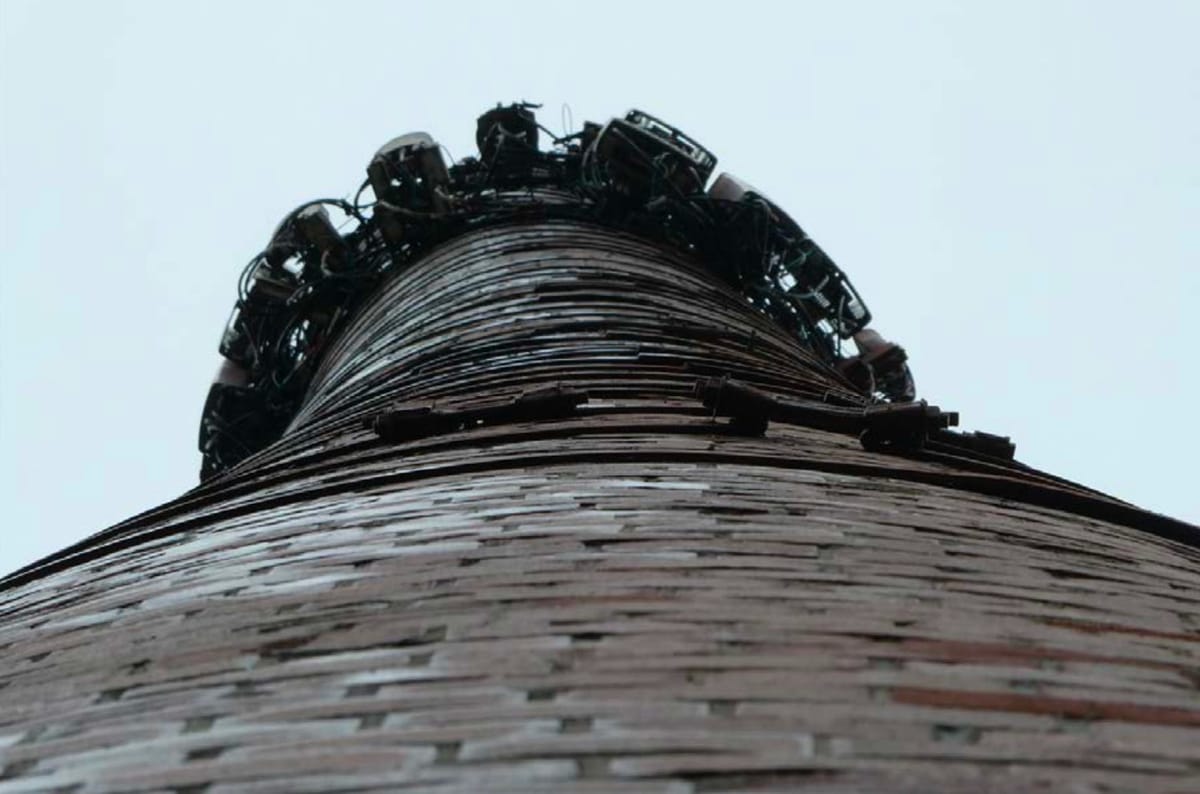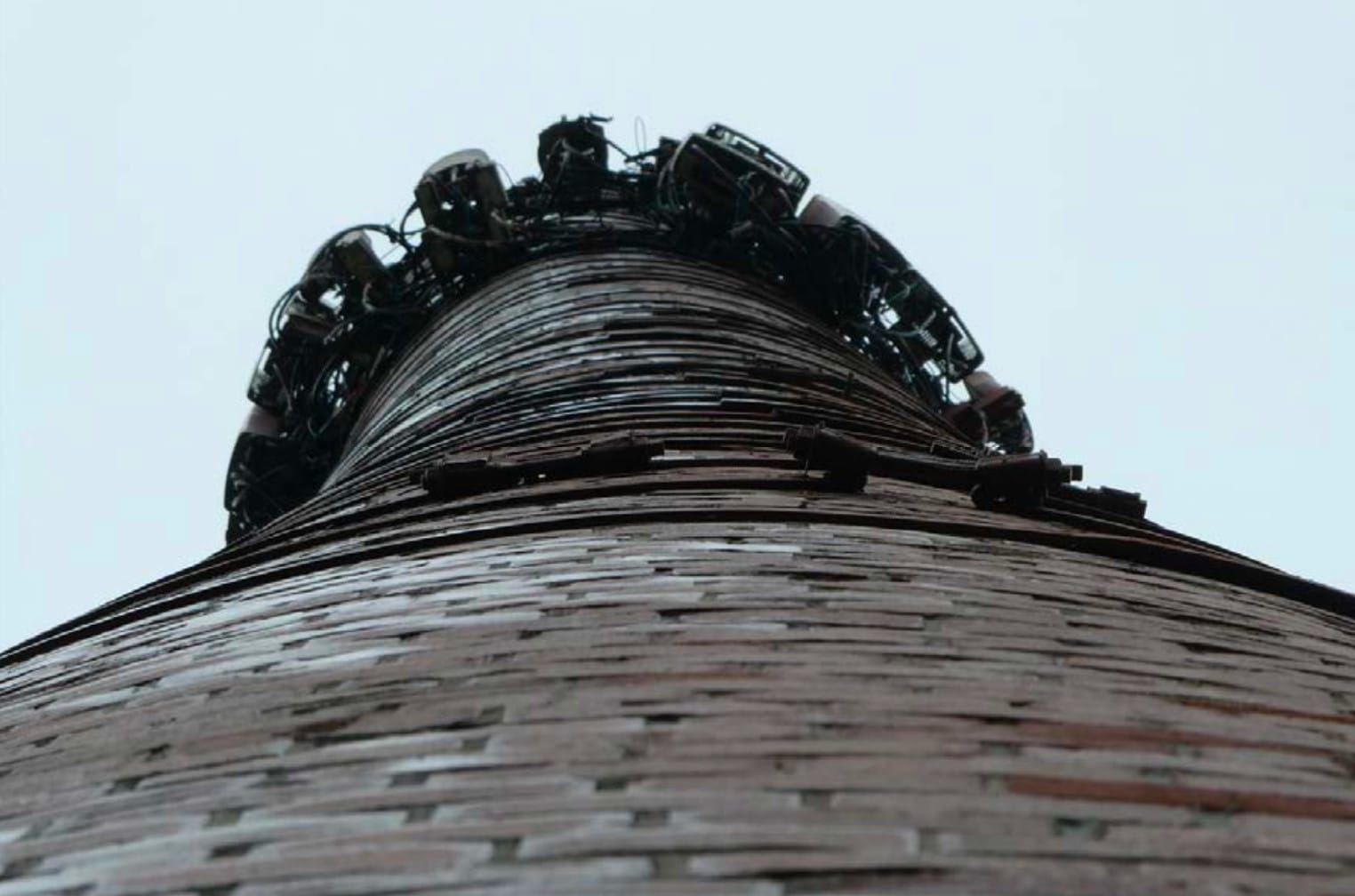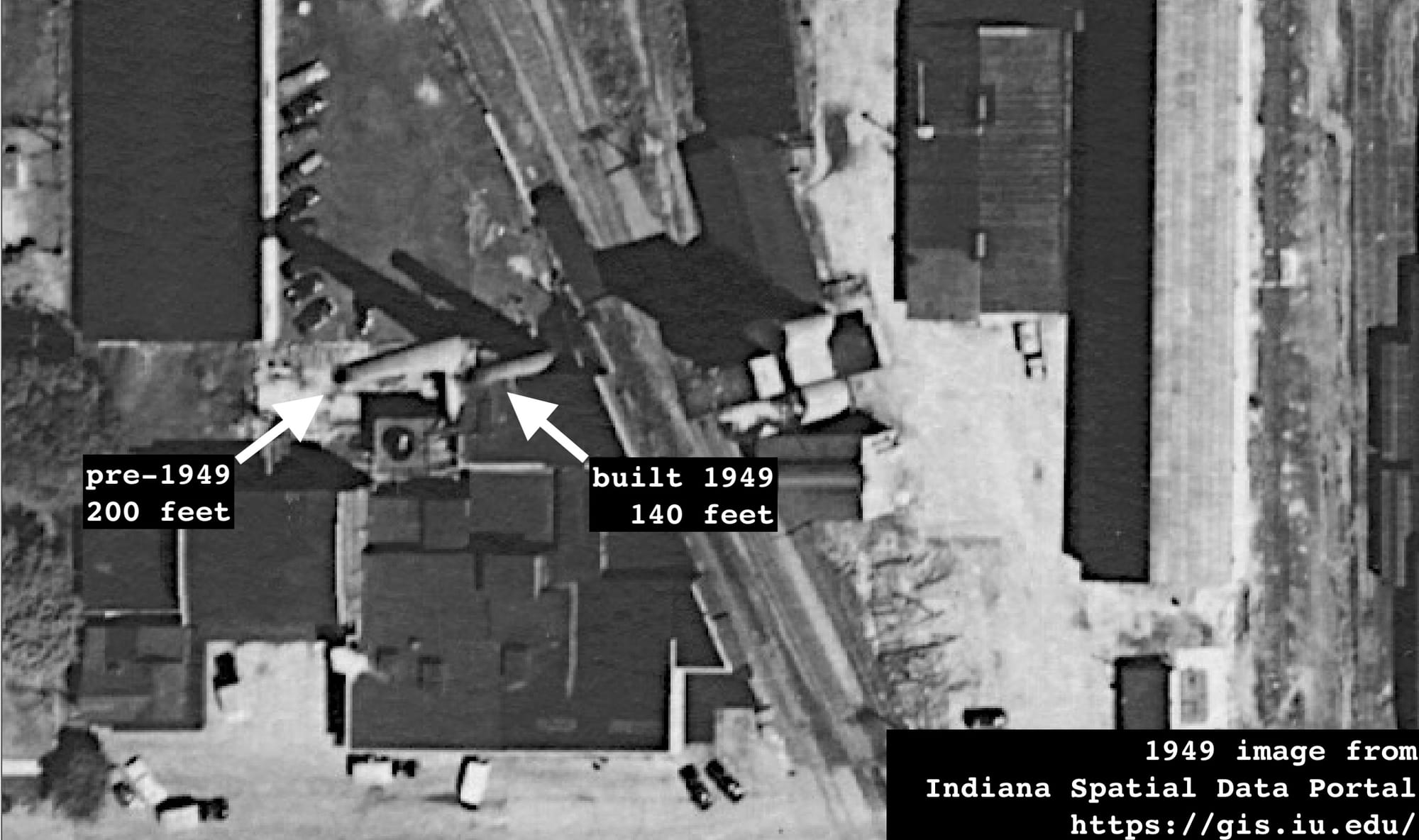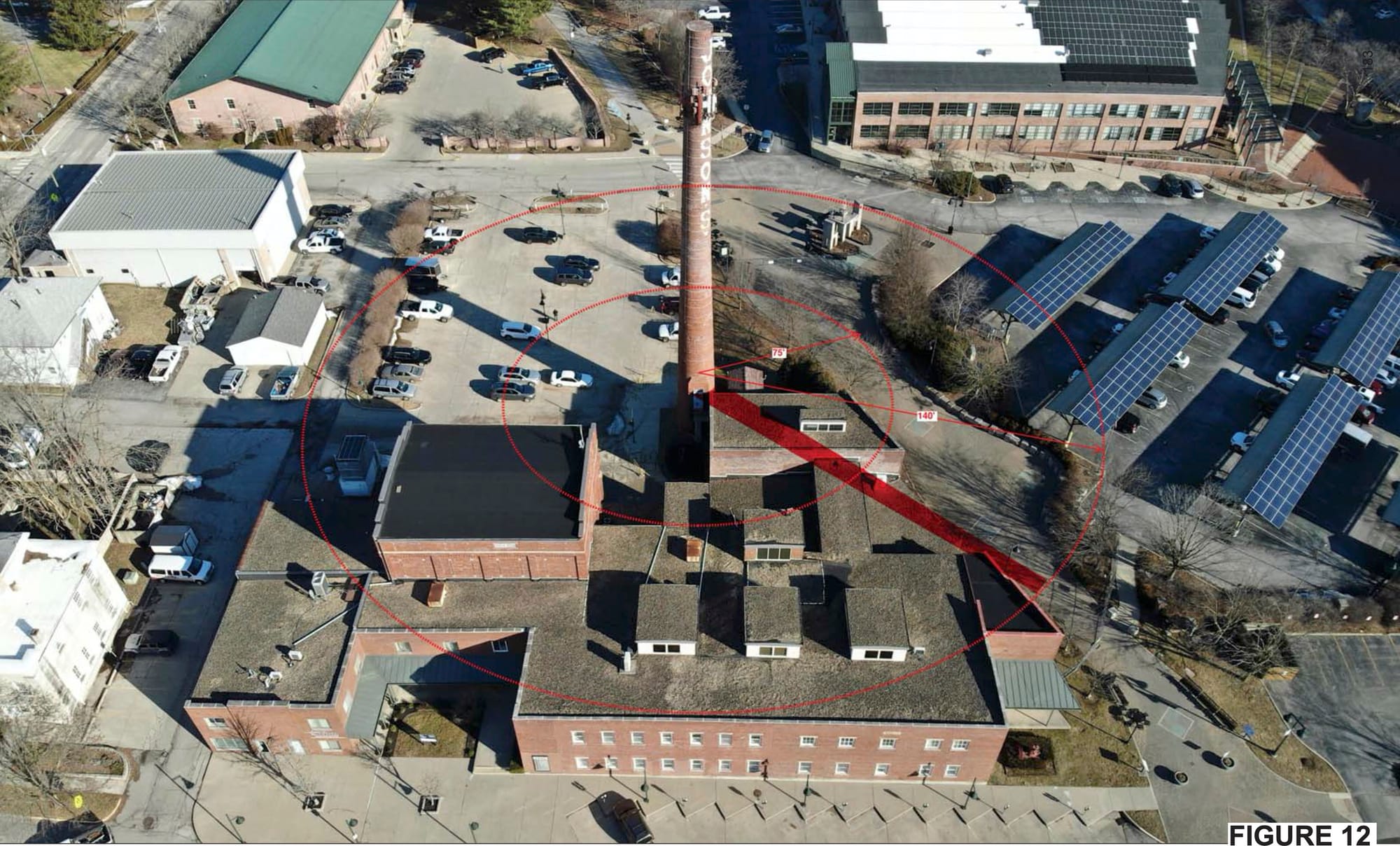Future of Johnson’s Creamery smokestack height to be decided by historic preservation commission, Bloomington city council




As soon as this Thursday (March 24), the future of the iconic Johnson’s Creamery smokestack, just across the B-Line Trail west of city hall, could be settled.
That’s when Bloomington’s historic preservation commission (HPC) is scheduled to meet and act on a request from the owner of the Johnson’s Creamery building to reduce the height of the smokestack from 140 to 60 feet, and to stabilize the remaining, shorter smokestack.
The leaning and deteriorating smokestack is the subject of an unsafe building order issued by the city of Bloomington in late December 2021. The city’s housing and neighborhood development department (HAND) ordered the smokestack repaired within 60 days.
[Added at 9:35 a.m. on March 23: A current order that was issued by HAND on March 11 says the owner has to demolish the smokestack down to a height of 60 feet.]
But on Thursday, the HPCs granting of a certificate of appropriateness for partial demolition is not guaranteed. And it would require some coordination with potential city council action on Wednesday.
Before the request for a “certificate of appropriateness” can be granted by the HPC, Bloomington’s city council would need to establish the legal framework for the issuance of such a certificate. That framework would come in the form of a one-building local historic district.
That’s why an ordinance to establish the Johnson’s Creamery Historic District is on the city council’s Wednesday (March 23) agenda. Ordinarily, the enactment of any ordinance requires two separate readings, not on the same day or the same meeting. But if there is unanimous consent among councilmembers, an ordinance can be enacted at the same meeting when it is introduced.
In that case, unanimity means the “unanimous consent of the members present, at least two-thirds of the members being present and voting.”
The HPC met almost two weeks ago, on March 10, to make the recommendation to the city council that a historic district be established for the Johnson’s Creamery, including its smokestack. This link is cued up to the spot in the video where the HPC deliberations from March 10 start: [YouTube of HPC March 10, 2022]
At that meeting, HAND director John Zody told the HPC that there’s some urgency attached to the issue—because of the danger posed by the smokestack, if it were to collapse. The B-Line Trail, which runs just to the east of the smokestack, is currently blocked off because of its unsafe condition.
One of the photos included in an engineering report includes annotations showing where the smokestack would land, if it fell in the direction it is leaning—to the southeast.
The vote to establish the historic designation was uncontroversial for the commissioners. The site clearly meets historic as well as architectural criteria, according to the report from Bloomington’s historic preservation program manager Gloria Colom.
In the historic category, the Johnson’s Creamery building:
- Exemplifies the cultural, political, economic, social, or historic heritage of the community.
In the architectural category, the Johnson’s Creamery building:
- Owing to its unique location or physical characteristics, represents an established and familiar visual feature of the city; or
- Exemplifies the built environment in an era of history characterized by a distinctive architectural style
The 1949 smokestack is a bit younger than the Johnson’s Creamery building itself, which was completed in 1914. According to the background material in the meeting information packets, a 200-foot smokestack previously stood near the location of the current one, but was replaced in 1949. In 1996, the creamery and smokestack were placed on the National Register of Historic Places.
The main focus of the HPC deliberations on March 10 was the boundary of the district. Often, for a single-building district, the historic district boundary includes the whole parcel, Colom said. In this case there’s a future housing development approved for the north part of the parcel.
So the staff-proposed proposed district boundary is for the southern part of the parcel where the current building sits.
Joe Patrick, the director of development for Peerless Development, made a pitch at the HPC’s March 10 meeting for defining the district boundaries as the building footprint. Patrick is looking ahead to construction of the housing development and wants, if possible, to avoid going through the HPC for approvals related to issues that are in the parking lot of the southern part of the parcel.
Assistant city attorney Daniel Dixon indicated that the city council could alter the boundary when it considered the ordinance at its Wednesday meeting.
On the topic of the boundary, the view of recently appointed historic preservation commissioner and former city councilmember Allison Chopra was the one that won the day: “I would leave it as is and let the council debate that into the wee hours of the night.”
In a recent engineering study by Arsee Engineers, the cost for the partial demolition down to the 60-foot height, and stabilization of the remaining smokestack, is pegged at $350,000.
An alternative that would leave 75 feet of the stack in place would cost an estimated $525,000, according to the engineering study.
[Added at 9:35 a.m. on March 23: A current order that was issued by HAND on March 11 says the owner has to demolish the smokestack down to a height of 60 feet.]
At the March 10 HPC meeting, public commentary was solidly in favor of the recommendation to establish the historic district. One speaker compared the role of the Johnson Creamery smokestack in Bloomington’s skyline to that of the Gateway Arch in St. Louis.
Responding to the parallel between the smokestack and the St. Louis Arch was Peerless Development founder Michael Cordaro. He said that no private person owns the St. Louis Arch.
Cordaro said, “I just want to say we’d be happy to sell it to the city of Bloomington for $1.”






Comments ()